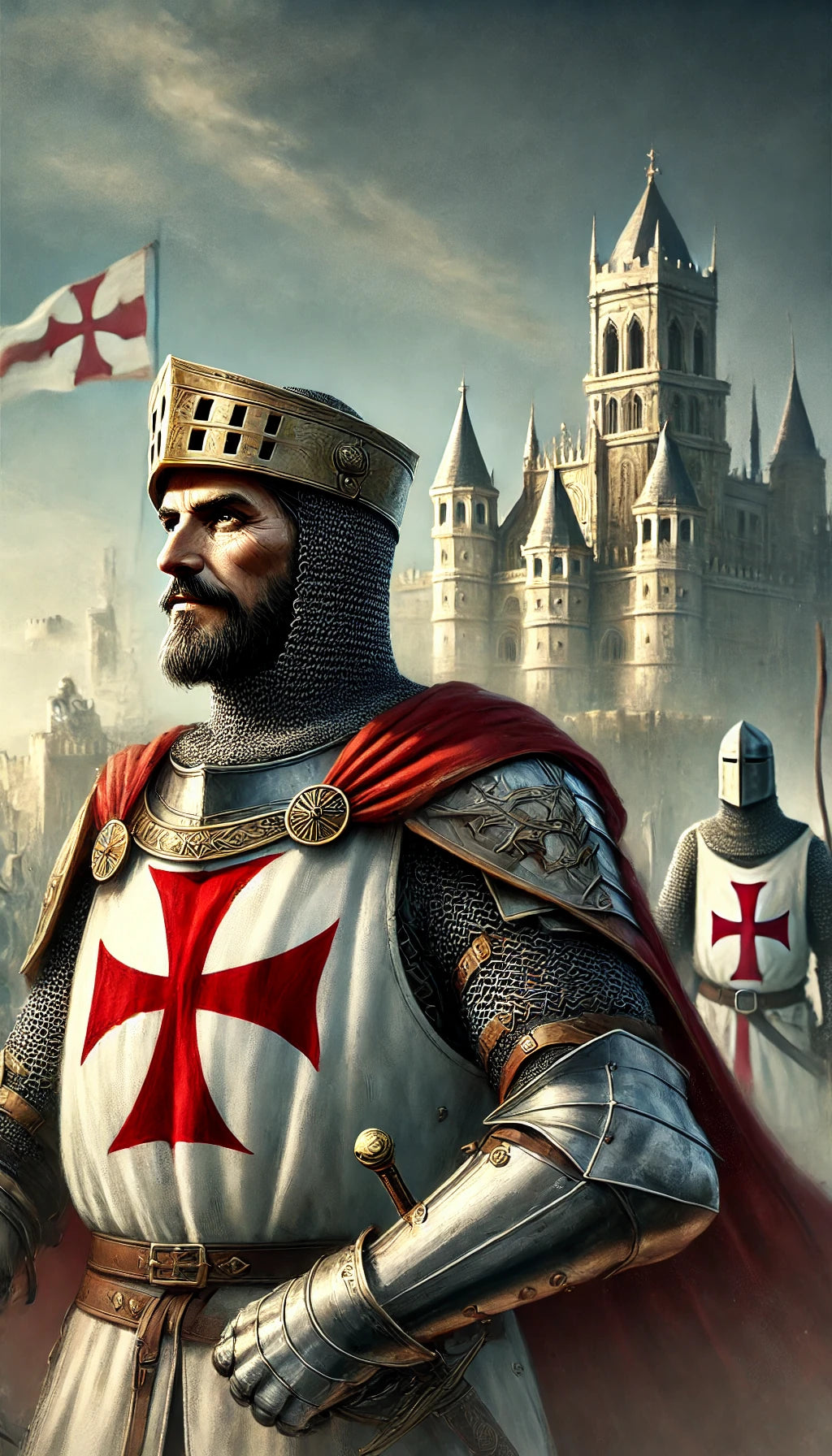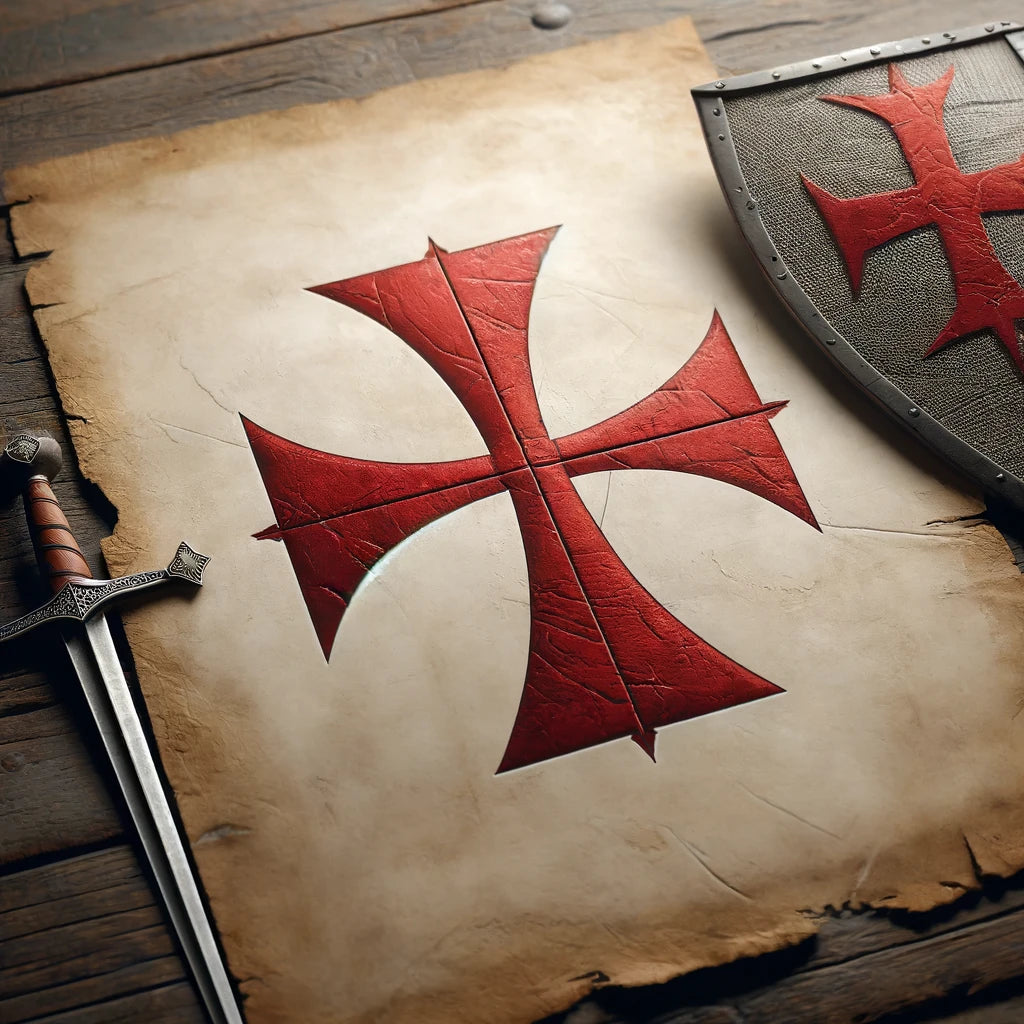The Multifaceted Role of Swords in the Lives of the Knights Templar
Swords were more than just weapons for the Knights Templar; they were symbols of their spiritual and martial duties, tools of everyday necessity, and central elements in their ceremonial practices. This section explores the various dimensions of the sword's role in the life of a Templar knight.

Design and Craftsmanship
Templar swords were typically double-edged, designed for both slashing and thrusting, making them versatile tools in battle. The blades were forged from high-quality steel, ensuring they were both strong and flexible. The hilt was often decorated with intricate designs and religious symbols, providing a secure grip and a personal touch reflective of the knight's status and faith.
Blade Construction
The process of creating a Templar sword was meticulous, involving multiple stages of heating, hammering, and cooling the metal to achieve the desired strength and flexibility. The blade's double-edged design allowed knights to be effective in both offensive and defensive maneuvers during combat.
Hilt and Guard
The hilt was usually crafted from wood and wrapped in leather, providing a comfortable and firm grip. The guard, often fashioned into a cross shape, not only protected the hand but also served as a constant reminder of the knight's religious commitment.
Pommel
The pommel, at the sword's base, was often inscribed with religious symbols or the knight's personal insignia. This balancing weight helped improve the sword's handling and was sometimes used as a blunt weapon in close combat.
Explore Our Collection: Discover our authentic Templar swords crafted with the same meticulous attention to detail.
Symbolism
The sword was a potent symbol of the Templars' dual nature as both monks and warriors. The presence of the cross on the hilt symbolized their spiritual mission, while the blade represented their martial prowess.
Religious Significance
Swords were often blessed by clergy before battle, imbuing them with spiritual significance. The act of carrying and using a sword was seen as an extension of the knight's vow to protect the Christian faith and fight against its enemies.
Personal Symbol
Each sword was unique to its owner, often featuring personalized engravings or decorations. This made the sword a symbol of the knight's identity, honor, and personal commitment to the order's ideals.
Own a Piece of History: Get your own Personalized Templar Sword with custom engravings.
Practical Use
In battle, the sword was indispensable. Its design allowed for effective combat in various situations, from open-field battles to close-quarters engagements within castles or fortresses.
Versatility in Combat
The double-edged blade allowed knights to deliver powerful cuts and precise thrusts. The sword's length and balance made it suitable for both mounted and dismounted combat, providing versatility in different combat scenarios.
Maintenance and Care
Templar knights took great care in maintaining their swords, regularly sharpening the blade and cleaning it to prevent rust. This upkeep was crucial to ensure the sword's effectiveness and longevity.
Training
Training with the sword was a fundamental part of a knight's regimen. Knights practiced various techniques and drills to master their weapon, ensuring they were prepared for the rigors of combat.
Ceremonial Significance
Beyond its practical use in combat, the sword played a vital role in the ceremonial life of the Knights Templar. It was used in rituals, oaths, and symbolic acts that reinforced the spiritual and communal bonds within the order.
Rituals and Oaths
During initiation ceremonies, new members would swear oaths on a sword, symbolizing their commitment to the order and its principles. The sword was also used in other religious and chivalric ceremonies, emphasizing its sacred role.
Knighthood Ceremonies
In ceremonies where a squire was knighted, the sword was used in the dubbing process. This act, performed by a senior knight or a noble, symbolized the transition from squire to knight and the acceptance of new responsibilities.
Symbol of Authority
The sword was a symbol of a knight's authority within the order. Senior knights and commanders often carried specially decorated swords that signified their rank and leadership role.
Join the Legacy: Explore our ceremonial Templar swords for your next reenactment or collection.






















